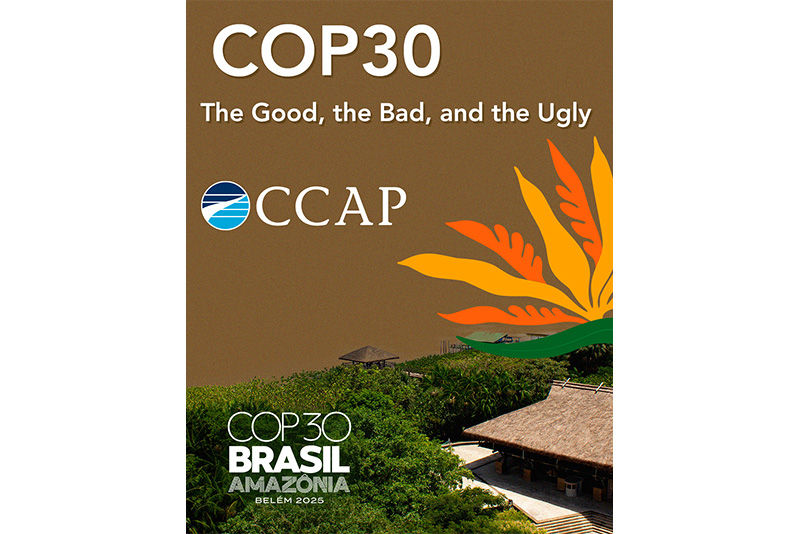Calling on President Obama to Fulfill his Promise to Lead on Climate Change
- Stacey Davis
- Nov 9, 2012
- 3 min read
With Hurricane Sandy fresh in our minds, this is an ideal time for President Obama to work once again to fulfill his promise to lessen the adverse effects of climate change through U.S. leadership, both at home and abroad, and to guide the country and the world toward a cleaner and less carbon-intensive 21st century economy.
Yes, there are upcoming challenges with the budget and there is still considerable division between the Parties in Congress, but the costs of not acting on climate change—to our infrastructure, economy, health, welfare and security—are becoming increasingly clear. Consistent messaging from the White House and the Cabinet can help overcome the cloud of doubt put in place by the powerful old guard interests that stand to lose if they decide not to innovate towards lower carbon business practices.
Beyond messaging, CCAP looks to President Obama to take the following priority actions to spur low carbon, and climate resilient economic development:
Use existing regulatory tools to encourage meaningful emissions reductions from our biggest emitters— existing coal-fired power plants—through additional shifts to cleaner and more efficient energy resources (including domestic natural gas resources). These regulations can be implemented gradually, and in ways that limit costs and maintain flexibility for both states and regulated industries.
Spearhead new measures to foster renewed growth of the US manufacturing sector by encouraging industrial efficiency and modernization, reducing the sector’s environmental impact and improving its economic competitiveness. Building on current efforts to overcome capacity and informational barriers, President Obama can advance solutions that state governments can adopt to create a level playing field for combined heat and power (CHP) in a way that is fair to manufacturing interests, electric utilities and consumers. Likewise, the President can evaluate ways the Federal government can more directly advance efficient manufacturing, including through appropriate recognition of indirect emissions reductions achieved by CHP technologies. These measures, along with targeted incentives, can help spur private sector investments needed to realize the CHP goal in the President’s Executive Order.
Reach out to members of Congress to foster bipartisan action and financial support to improve resilience both at home and abroad to sea level rise, flooding, storm damage, extreme heat events, water scarcity, forest fires and other impacts expected as a result of climate change. While funds are still needed for emergency services, the Federal government should step up support for planning and finance of priority projects that can reduce the impacts of future catastrophic events as well as the more persistent effects of climate change. The post-partisan collaboration that continues in the wake of Hurricane Sandy affords an opportunity to forge broader bipartisan collaboration towards these ends.
Play a more constructive role in forging a pathway to a future international agreement that would commit all major emitters to binding action. Critical to this is maintaining and renewing the US commitment to providing international financial support for mitigation and adaptation in developing countries, rising to our share of the promised international level of public and private support of $100 billion per year by 2020. Also essential is supporting domestic and international mitigation solutions that can be effective in moving toward a lower carbon development path consistent with limiting temperature increases to below 2 degrees C. In particular, nationally appropriate mitigation actions hold promise to achieve broad-based emissions reductions in developing countries. Further, greater engagement on transparency and international consistency in reporting across both developed and developing country parties will provide a higher level of accountability.
Through an ongoing multi-stakeholder U.S. Climate Policy Initiative, CCAP is working with a range of stakeholders and experts to explore cost-effective and pragmatic policy options to reduce greenhouse gas emissions in the United States. Through our Mitigation Action Implementation Network, CCAP also works with policy makers and climate negotiators from around the world to advance national and international climate policy solutions that are consistent with economic growth and sustainable development goals. CCAP looks forward to working with the new Obama Administration to identify and advance workable domestic and international climate change solutions.




Comments